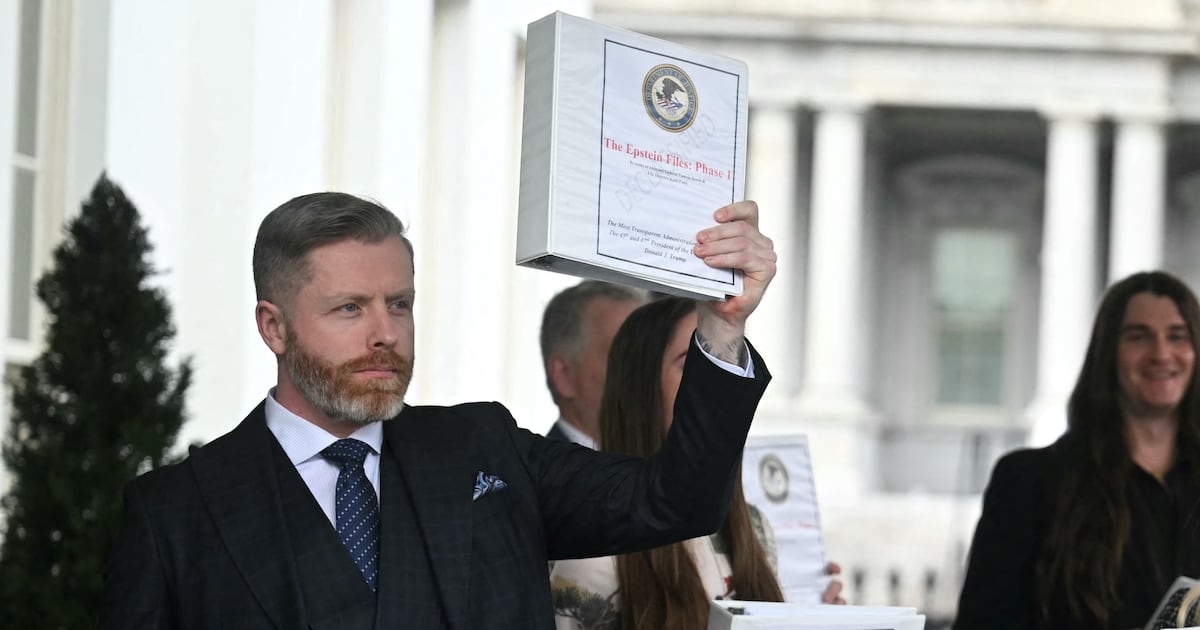On Sunday night, the first season of HBO's deep, dark crime drama True Detective came to a close. It wasn't your average season finale. Usually with a show you love—Mad Men, Game of Thrones, whatever—you know your favorite characters will be returning in a year or two. Their narrative will continue. But True Detective is different. From the start, creator Nic Pizzolatto designed it as an anthology series. One story per season. Beginning, middle, and end.
This means that, as of Sunday night, the tale of Rust Cohle, Marty Hart, and the 17-year search for the man who murdered Dora Lange is officially over. The Yellow King is a thing of the past. Carcosa is no more. And Matthew McConaughey and Woody Harrelson won't be coming back. The second season of True Detective will tell a different story—with different characters, different actors, and a different setting.
And I, for one, couldn't be happier.
I thought Sunday's finale ("Form and Void") was the perfect conclusion to a series that has come as close to perfection over the course of its eight all-too-brief episodes as any I can remember. To stick around any longer—as much as I adore Rust and Marty and the whole Carcosa mystery—would have broken the spell. And to tie things up in any other way would have betrayed what the first season of True Detective was all about.
Before I explain why, let's review what happened in "Form and Void."
Or rather, let's review what didn't happen. (Warning: stop reading now if you haven't seen the finale yet. The rest of this review will consist of nothing but spoilers.) We didn't meet a tentacled Yellow King from another dimension. We didn't step through some sort of mystical portal and enter the Lovecraftian land of Carcosa. We didn't reenact the Vietnam War or discover that Marty's father-in-law had raped Marty's daughter. We didn't find out that Marty was really the killer, or that Rust was really the killer, or that the guy at the banh mi place was really the killer. We didn't unravel a "five horsemen" conspiracy that went all the way to the top—to Sen. Eddie Tuttle. We didn't fulfill the Internet's wildest expectations.
Instead, we got exactly the finale that Pizzolatto had promised us all along: no alarms, no surprises—for the first three-quarters of the episode, at least. "I cannot think of anything more insulting as an audience than to go through eight weeks, eight hours with these people, and then to be told it was a lie—that what you were seeing wasn’t really what was happening," he told me earlier this year. "The show’s not trying to outsmart you.”
And so Marty, on a hunch, searched through the canvassing photos that he and Rust had snapped in 1995 while investigating the Lange murder near Erath. He stumbled on a shot of a freshly painted green house. "Why green ears?" he asked his partner, referring to the police sketch of the so-called "spaghetti monster" who had chased a young girl through the woods decades back. "Maybe [the killer] painted that house," Marty suggested. Before long, Rust and Marty had dug up the contractor's name— Childress and Son. That led them to the Childress homestead, a decaying white clapboard building in the middle of the Louisiana swamp, which in turn led them to Errol Childress: the lawnmower man, the illicit grandson of Sam Tuttle, the man with the scars, the spaghetti monster, the killer.
Childress sure was creepy: married to his half-sister, who was apparently raped by his grandfather; surrounded by decrepit dolls; in the habit of referring to sex as "making flowers"; prone to adopting a James Mason accent for no discernible reason. Childress even kept his dead father Billy bound up and rotting in a nearby shack, Psycho-style. But after leading Rust into some sort of a brick building clearly designed by the same twig-loving decorator who had created all those devilcatchers, the spaghetti monster finally met his match. Rust was stabbed. Marty was hatcheted. Childress was shot in the head.
In short, our detectives got their man.
And that's it. That's all that "happened," plot-wise, in "Form and Void." But a lot more was going on—especially in the last 15 minutes of the episode.
I'm sure that the web will spend most of this week obsessing over the more supernatural elements of Sunday's finale. What did the drawings on the side of Childress's shack—an ascending figure with antlers surrounded by black stars and flowers—really mean? Why did Childress tell Rust to "take off [his] mask"? And what the heck did Rust see in the domed "Carcosa" throne room before Childress leapt from the shadows and stabbed him? Was it some sort of astronomical hallucination? Or was he "mainlining the secret truth of the universe" again?
But as enjoyable as this sort of literary trainspotting can be, I also consider it window dressing. The true meaning of True Detective doesn't have all that much to do with Robert Chambers or the stories he wrote way back in 1895. Instead, the true meaning of True Detective is about the power of storytelling itself.
I've advanced this theory before. But the final moments of "Form and Void"—the conversation between Rust and Marty outside the hospital where they've been recuperating after their bloody encounter with Childress—made the show's intentions clearer than ever.
In the earliest episodes of True Detective, Pizzolatto established a clear dichotomy. On the one hand, there’s investigation—storytelling as a search for the truth. On the other hand, there’s religion—storytelling as an escape from the truth.
It’s no accident, for instance, that the religious task force led by the Rev. Billy Lee Tuttle swoops in during Episode 2 and tries to stymie Rust and Marty's investigation (as I wrote last week). It’s no accident that when the case subsides, Marty joins Promise Keepers. It’s no accident that before she died, Dora Lange told her friends that she had been “going to church.” And finally it’s no accident, as we learned in Episode 7, that Tuttle’s Christian charter schools were feeders—and Tuttle’s ministry a cover story—for the pagan Yellow King-Carcosa cult that seems to be some sort of sadistic Tuttle family tradition.
Pizzolatto could have made the Tuttles a clan of psychopathic murderers. He didn't. He made them a clan of psychopathic murderers who subscribe to a very specific theology: a theology that alludes, crucially, to The King in Yellow—an external narrative that is supposed to create insanity, or as Pizzolatto “prefer[s]” to put it, “deranged enlightenment,” which sounds a lot like a skeptic’s view of religion as a whole. In other words, both Christianity and “Carcosa” are stories. Stories people tell themselves to escape reality. Stories that “violate every law of the universe" (as Rust once put it).
Of course Christianity and the Carcosa cult aren't the same thing. But take your “fairy tales” too far, Pizzolatto seems to be arguing, and you can wind up in some pretty sick places.
There is, however, an antidote.
Throughout True Detective, Pizzolatto has linked blindness—an unseeing state—to the victims of the Carcosa cult. Dora Lange was wearing a blindfold when she was discovered in a prayer position at the base of that tree. ("“In order to effectively pray you’re going to have to ignore some very basic facts about the world," Pizzolatto once told me. "In order to mean it.”) Marie Fontenot was wearing a blindfold on the gruesome videotape that Rust found in Billy Lee Tuttle's safe. And even Errol Childress chimed in during Sunday's finale. "It's been weeks since I left my mark," he said in his jaunty British accent. "Would that they had eyes to see."
But when Rust and Marty once again partner up in Episode 7—when they once again became true detectives, or storytellers in search of the truth—Rust delivers a line that pits what they do against what storytellers like Errol Childress do.
"I won't avert my eyes," Rust says. "Not again."
On True Detective, investigation—"looking for narrative [and] build[ing] a story, day after day,” in Marty's words—is how you "see the light." In the season's final scene, Marty and Rust leave the hospital. They still bicker like brothers, but their bond is strong. In a rare moment of vulnerability, Rust tells Marty he "shouldn't be here." He says that when he was unconscious, he could sense "[his] definitions fading" in "the darkness"; he felt "nothing but" his dead daughter's "love." He wanted to let go, but then he woke up. He begins to weep.
Marty puts a hand on his partner's shoulder and tries to comfort him. "Hey," he says. "Didn't you tell me one time ... you used to make up stories about the stars?"
"Yeah, I was in Alaska," Rust says. "I never watched a TV 'til I was 17. Wasn't much to do there. So I'd look up at the stars and make up stories."
Rust pauses for a moment. "I tell you, Marty," he finally says. "I been in that room, looking out those windows, just thinking. It's just one story. The oldest."
"What's that?" Marty asks.
"Light versus dark," Rust says.
And that's the power of storytelling. Sure, you can tell stories about black stars. You can even choose to believe them. But you can also tell stories, like Rust and Marty, that shed light on things. The great achievement of Season 1 of True Detective is that Pizzolatto, McConaughey, Harrelson, and director Cary Fukunaga have created a show about a subject this serious—the ways that narrative itself can generate both good and evil—that is also, somehow, a grand, intoxicating entertainment: brilliantly acted, beautifully directed, and never, ever dull.
Eventually, Marty responds. "I know we ain't in Alaska," he says. "But it appears to me the dark has a lot more territory."
At first, Rust agrees. As it says in Genesis 1:2, "the earth was without form and void, and darkness was over the face of the deep." But then he reconsiders—and this is Pizzolatto's only twist. In the last seconds of the season, the nihilism and misanthropy that have characterized Rust's worldview soften, however briefly, as he realizes that maybe he is here for a reason.
"You're looking at it wrong," Rust mutters. "The sky thing."
"How's that?" Marty replies.
"Well, once there was only dark," Rust says. "You ask me, the light's winning."





